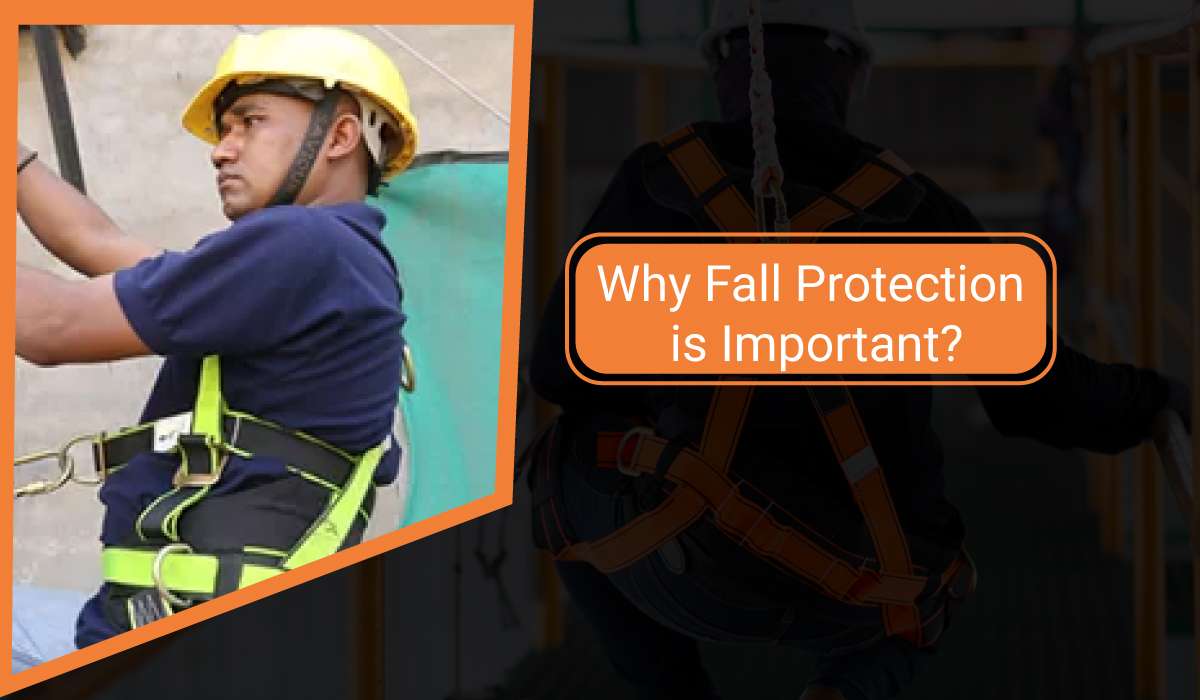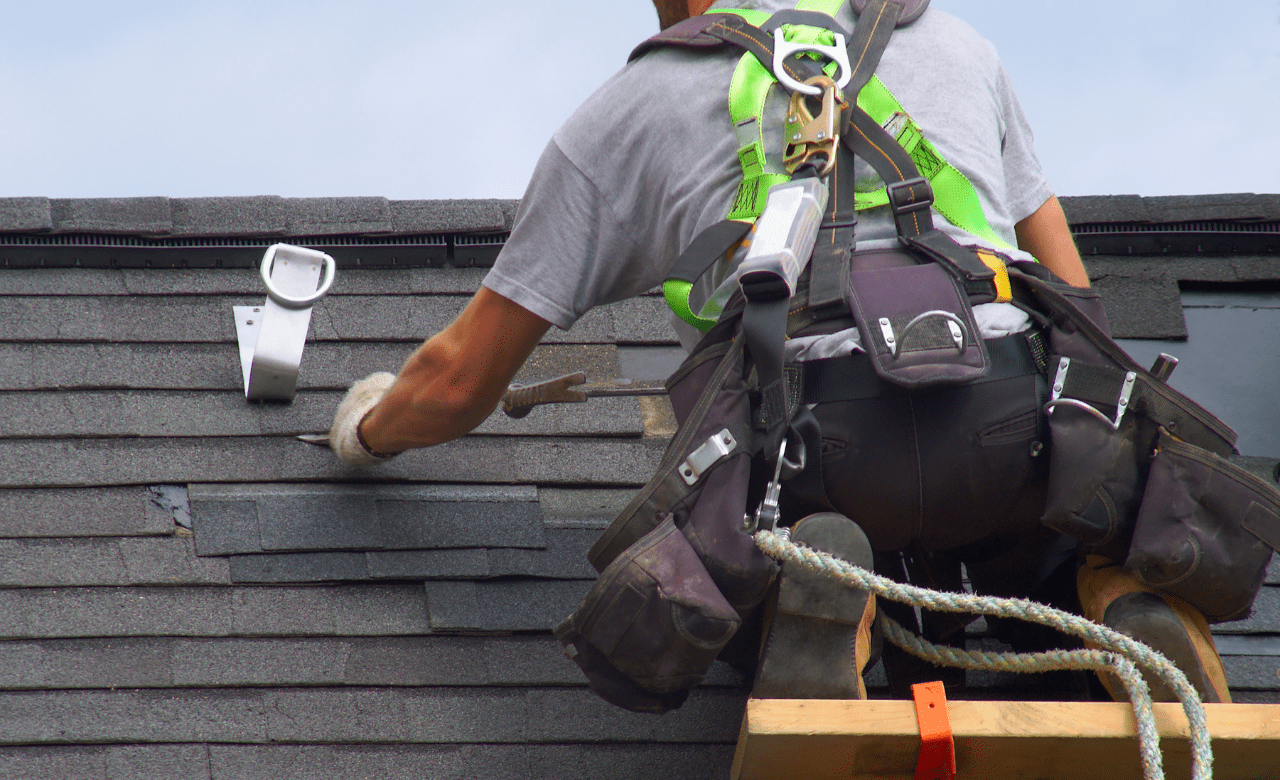Introduction:
In terms of occupational safety, the importance of fall protection in the context of workplace safety cannot be emphasised. As workers engage in tasks at various elevations, the potential for accidents looms large. This article delves into the vital importance of fall protection, exploring the reasons why a robust fall protection system is indispensable for safeguarding lives and promoting a secure work environment.
Why fall protection is important?
The question forms the centre of our exploration, and it transcends mere compliance with safety regulations. At its core, fall protection is about preserving human life and well-being. According to the National Safety Council, falls are a leading cause of workplace injuries and fatalities. Recognizing the cause of this issue propels us to delve into the multifaceted reasons why fall protection is non-negotiable in any occupational setting.
Preservation of Life and Well-Being:
Fall protection systems stand as the vanguard against catastrophic incidents. By preventing falls and minimising the impact when they occur, these systems play a pivotal role in preserving the lives and well-being of workers. The emotional and economic toll of workplace injuries can be staggering, making fall protection an ethical imperative.
Compliance with Regulations:
Regulatory bodies across industries mandate the implementation of fall protection measures. Compliance with these regulations is not merely a box-ticking exercise; it is a commitment to prioritising safety. Failure to adhere to these guidelines not only invites legal repercussions but also jeopardises the reputation of the organisation.
Enhancing Worker Productivity:
A secure and protected work environment fosters a culture of trust and confidence among workers. Knowing that their safety is paramount, employees can focus on their tasks without the constant fear of potential falls. This sense of security translates into increased productivity and efficiency.
The Anatomy of an Effective Fall Protection System:
Now that we have established the importance of fall protection, let’s explore the components that constitute an effective system. Employing a haphazard approach or cutting corners in fall protection can be as perilous as having no system in place. The following elements form the backbone of a robust fall protection infrastructure:
Full Body Harness:
A cornerstone of fall protection, the full body harness is designed to distribute forces throughout the body, minimising the impact on specific areas during a fall. Its ergonomic design ensures that workers are not only protected but also comfortable, promoting long-term wear compliance.
Engineered Fall Protection Systems:
Generic or makeshift fall protection solutions often fall short in providing comprehensive coverage. Engineered fall protection systems, on the other hand, are tailored to the specific needs and nuances of the work environment. This customized approach ensures that every potential fall hazard is addressed, leaving no room for oversight.
Regular Inspections and Maintenance:
Like any other safety infrastructure, fall protection systems require regular inspections and maintenance. A lapse in this regard can compromise the efficacy of the system. By instituting a proactive approach to upkeep, organizations demonstrate a commitment to sustained safety.
How can falls be prevented?
Fortunately, you may contribute to the reduction of workplace falls in a number of ways. First and foremost, it’s critical to consider potential fall hazards prior to starting work. By preparing for potential hazards, you can put the right fall protection in place before anyone is hurt. This procedure is frequently called a danger assessment. Examine the various ways an employee may trip and fall, as well as the ways you might prevent it.
Comprehensive Training:
Provide thorough training for all workers on fall hazards, safety protocols, and the proper use of fall protection equipment. Ensure that employees are familiar with the specific risks associated with their tasks and understand how to mitigate them.
Use of Personal Protective Equipment (PPE):
Mandate the use of appropriate personal protective equipment, such as full-body harnesses, lanyards, and lifelines, for workers exposed to fall hazards. Regularly inspect and maintain this equipment to ensure its effectiveness.
Guardrails and Barriers:
Install guardrails and barriers at open edges, floor openings, and other locations where falls could occur. These physical barriers act as a primary line of defence against accidental falls and provide continuous protection for workers.
Safety Nets:
Implement safety nets as a secondary means of fall protection. These nets are designed to catch workers in the event of a fall, preventing or minimising injuries. Proper installation and regular inspections are critical for their effectiveness.
Regular Site Inspections:
Conduct frequent site inspections to identify and address potential fall hazards. Regular checks should include scaffolding, elevated work platforms, and any temporary structures. Promptly rectify any issues or hazards discovered during inspections.
What Action to Take If a Fall Occurs?
It’s critical that you and the other workers know what to do in the event that one of your employees falls. In some cases, knowing how to perform CPR and administer first aid could mean the difference between life and death. The severity of the accident and the person’s injuries will determine what you should do, but here are some general guidelines to follow:
- Seek Medical Help: The first action should be to seek medical help. If the worker has serious injuries that require medical attention, take urgent action.
- Perform CPR and first aid: If the victim is bleeding, try to stop it with light pressure. Additionally, you ought to make sure that the person is breathing, awake, and has a pulse. Start CPR if there is no pulse and keep going until help arrives.
- Stay Calm & composed: Although these circumstances can be tense and chaotic, it’s crucial for all parties concerned to maintain composure. Being composed will enable you to assist the injured individual more effectively. Additionally, reassure the hurt worker that assistance is on the way and try to keep them calm.
- Refrain from relocating the person: It is advisable to keep the person who fell still. Additionally, try to prevent them from moving or getting up, as this may exacerbate any internal injuries.
Conclusion:
Fall protection systems should be prioritised in the competitive workplace safety landscape because it promotes a culture of care and responsibility in addition to helping businesses comply with regulations. For over four decades, Indian Inovatix has been at the forefront of ensuring worker safety by designing and delivering cutting-edge fall protection systems. With an unwavering commitment to prioritising safety in the construction industry, they firmly believe that safeguarding workers from potential hazards is paramount. Through their extensive experience spanning more than 40 years, Indian Inovatix has established itself as a trusted provider of innovative solutions, emphasising the crucial role that safety must play in the construction sector to preserve the well-being of workers.










